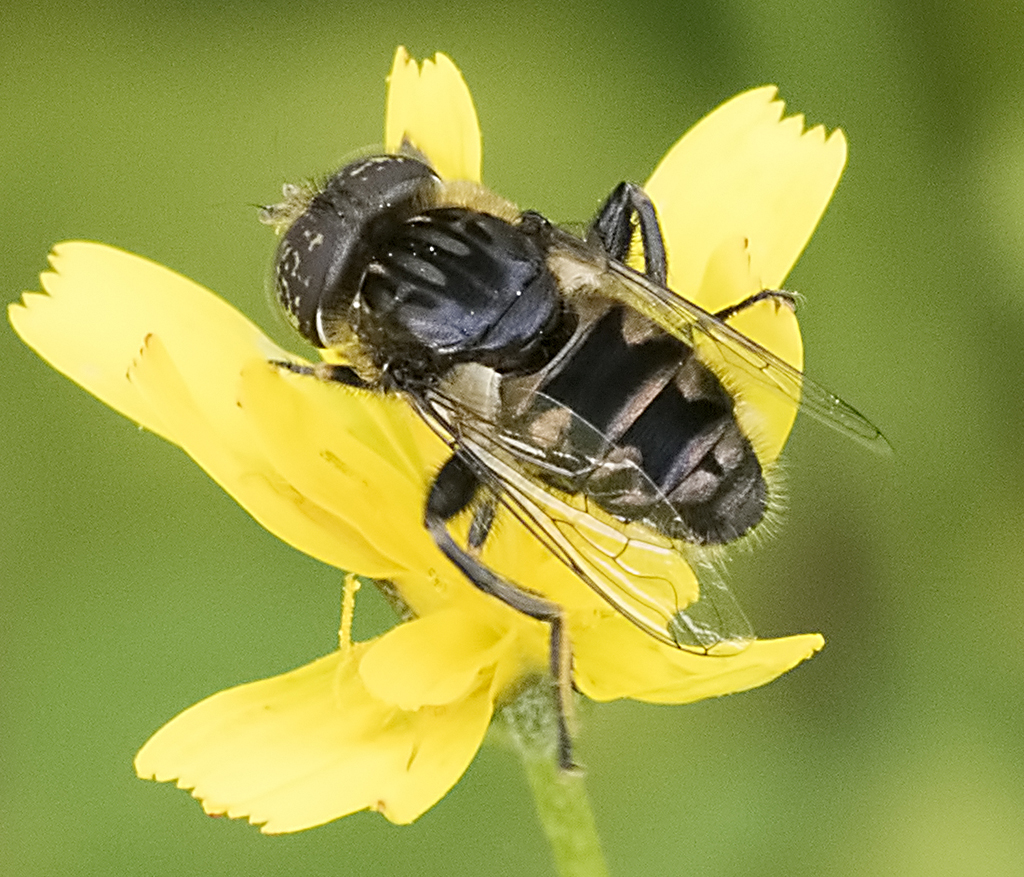Thanks Ali. I will be away for a couple of days, so will reassess when I get back.
Martin
The anal vein goes all the way to the wing margin, so I reckon this is Anthomyiidae. The overall shape reminds me of Delia, and the very hairy base of the hind femur suggests Delia radicum. Not 100% sure, but if not that, it's something close.
The Handbook keys work well in most cases, but Lonchoptera, especially lutea, are very variable in colour, and sometimes in chaetotaxy as well. Your specimen has a left fore tibia with what appears to be a dorsal bristle about 1/3 from the base. The right fore tibia appears to have a dorsal bristle about 2/3 from the base. This would fit with lutea (having lost a couple of bristles). L. lutea very occasionally has a short av bristle on the mid tibia (as can nitidifrons). There are some pale post-occipital bristles on your specimen, more typical of lutea than nigrociliata.
I would ask what the habitat was. If you swept it near a stony stream or fast-flowing river (especially one with shingle), then nigrociliata is likely. If you were nowhere near such water, then I think your first assumption (lutea) is probable.
Thanks Tony for this useful info. The problem with the key in Ken Smith's handbook is that it starts by distinguishing two groups by the presence or absence of an anteroventral bristle on the distal half of the middle tibia. The attached picture clearly shows such a bristle - hence my query. If L. lutea occasionally has this second bristle I can't get much further. But there is also the point about the end of vien a1 relative to the m-fork.
I think my specimen has dried out a little and lightened to a more normal tone. Assuming I'm looking at the same one I think it's just plain old P.tuguriorum! How I overlooked the hind pd will forever remain a mystery.
Thanks,Tony.
Thanks Martin for your thoughts. I have resolved to keep any dolis that I come across this year!
I came across a paper that separated Hercostomus species into several groups (femora colour, postocular colour, antenna colour) but only members of group 3 were listed. Is there a list of British species that have been allocated into this grouping scheme - it does seem a useful way to approach the genus.
Tim Hodge has photos of a male specimen identified as D. agilis on iRecord - we could ask if he is willing to pass it on if you need it Martin.
Thanks Martin
You are right. Femora have a very small dark mark at the tip of the dorsal surface only. The dark apical ring I was seeing is at the tip of the tibiae. Silly me.



There are only 3-4 yellow-legged Dolichopus with just one seta on the hind basitarsus so in theory it should be possible to make a correct identification for both sexes using Fonseca, although I've not been able to check this. Do hold on to any more specimens since it is genuinely uncommon. And maybe your identification was right.
But .... I have few records of agilis in the E&D scheme database, and they are scattered thinly across England and Wales in a manner that suggests plenty of incorrect identifications - scarcer species are not usualy smeared evenly across the country. I've never found it. There are no convincing females in the NHM London or Oxford Mus (the only one in London, in their World Collection, appears to be simplex; the one at Oxford has 2 setae on hind basitarsus). The only male in these museums (at Oxford) has lost most of its hind legs so I cannot verify Fonseca's key. The other male at Oxford has been placed upside-down, presumably by Fonseca, so he didn't agree with this det. So a bit of a mess.